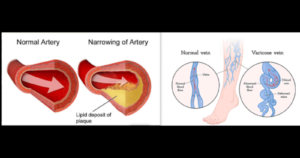Learn about common drugs and herbs that interact with Contrave, including opioids, MAO inhibitors, antidepressants, St. John’s Wort, blood pressure medications, and alcohol. Understand potential risks
CONTRAVE is a medication prescribed to assist overweight or obese adults with weight-related health issues in losing weight and maintaining that loss.
It combines two active ingredients, naltrexone and bupropion, which work together to achieve these weight management goals.
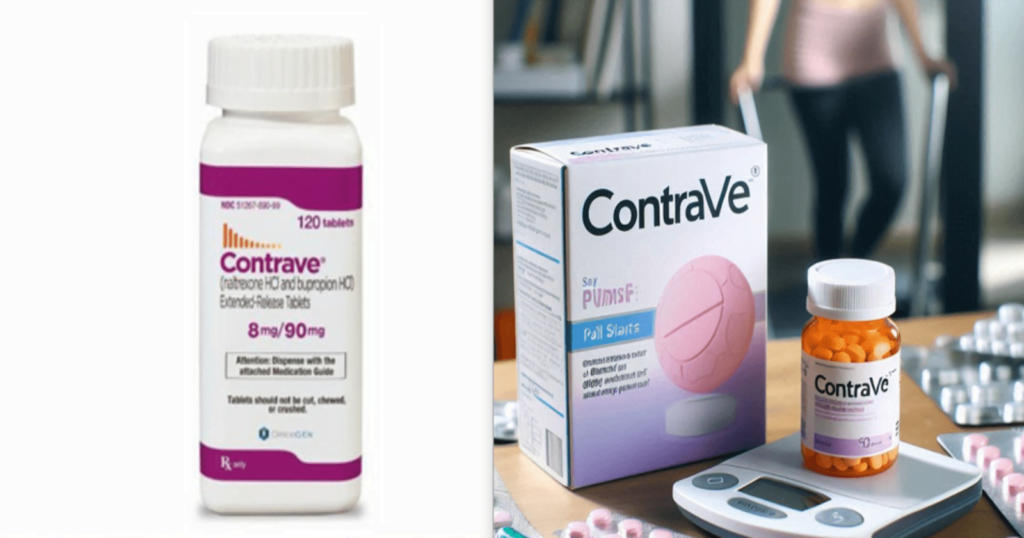
Serotoninergic Medications: how contrave Interacts with these medications
Serotoninergic medications, like SSRIs or SNRIs, help increase serotonin levels in the brain, which can improve mood and treat depression.
Contrave, on the other hand, contains bupropion and naltrexone, which mainly affect other brain chemicals like dopamine and norepinephrine.
Dapoxetine is primarily used for the treatment of premature ejaculation rather than depression or anxiety disorders. However, since it is a selective serotonin reuptake inhibitor (SSRI), it’s worth noting its interaction with Contrave:
| Types of SSRIs Medication | Interaction with Contrave |
|---|---|
| Fluoxetine | May increase risk of serotonin syndrome |
| Sertraline | May increase risk of serotonin syndrome |
| Paroxetine | May increase risk of serotonin syndrome |
| Escitalopram | May increase risk of serotonin syndrome |
| Citalopram | May increase risk of serotonin syndrome |
| Dapoxetine | May increase risk of serotonin syndrome |
While Contrave doesn’t directly boost serotonin, combining it with serotoninergic medications can still lead to too much serotonin in the brain.
This excess serotonin can cause a dangerous condition called serotonin syndrome, where symptoms like confusion, agitation, and rapid heartbeat can occur.
When Contrave is taken alongside serotoninergic drugs, there’s a risk of serotonin levels rising too high, leading to potentially severe health problems.
Healthcare providers closely monitor patients to prevent this interaction and may adjust medications accordingly to keep serotonin levels in check.
Types of SSRIs Medication & Uses
| Drug | Use |
|---|---|
| Citalopram (Cipramil) | For Depression & anxiety |
| Dapoxetine (Priligy) | For Premature ejaculation |
| Escitalopram ( Cipralex) | For Depression & anxiety |
| Fluoxetine ( Prozac) | For Depression & OCD |
| Paroxetine ( Seroxat) | For Depression & anxiety disorders |
| Sertraline ( Lustral) | For Depression, anxiety & PTSD |
| Vortioxetine (Brintellix) | For Major depressive disorder |
1. Citalopram (Cipramil):


Brand names for Citalopram (known as Cipramil in some countries)
- Celexa
- Cipram
- Talohexane
- Citadep
- Cilift
- Zentius
- Citalec
- Seropram
- Pramcit
- Celapram
2. Dapoxetine (Priligy)
Dapoxetine, marketed under the brand name Priligy, is primarily used to treat premature ejaculation (PE) in adult men aged 18 to 64 years.
Premature ejaculation is a common sexual disorder characterized by the inability to control ejaculation and achieving satisfactory sexual performance.


Some other brand names for dapoxetine include:
- Westoxetin
- Dapoxy
- Everlast
- Sustinex
3. Escitalopram (Cipralex)
Escitalopram, commonly sold under the brand name Cipralex among others, is an antidepressant medication used primarily to treat major depressive disorder and generalized anxiety disorder.
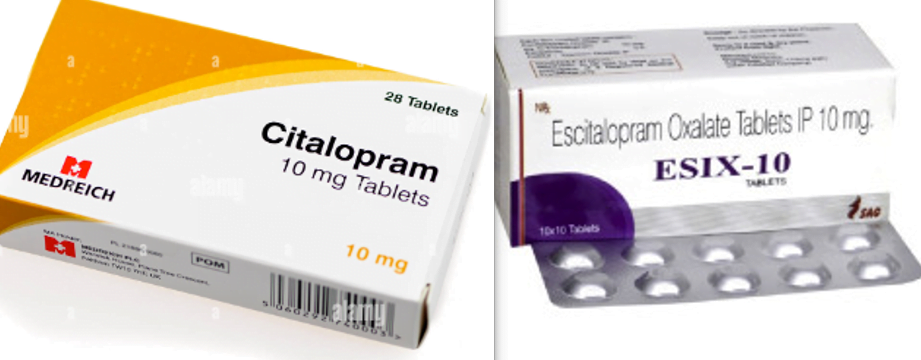
Citalopram 10mg tablets and Escitalopram Oxalate Tablets 10mg
Some of the brand names under which Escitalopram is marketed around the world:
- Cipralex (Canada, Europe)
- Lexapro (United States)
- Seroplex (France)
- Lexamil (South Africa)
- Esipram (Greece)
- Esertia (Spain)
- Losiram (Turkey)
- Neozentius (Mexico)
- Entact (Italy)
- Escitalopram (generic name in many countries)
4. fluoxetine (Prozac or Oxactin)
Used to treat major depressive disorder, obsessive-compulsive disorder (OCD), bulimia nervosa (an eating disorder), panic disorder, and premenstrual dysphoric disorder (PMDD).

Types of brand names fluoxetine.
- Prozac
- Sarafem
- Fontex
- Ladose
- Fluctin
- Prodep
- Reconcile
- Fluohexal
- Fluox
- Symbyax (combination of fluoxetine and olanzapine)
5. Paroxetine (Seroxat)
Paroxetine, commonly known by its brand name Seroxat in some countries and Paxil in others, is a selective serotonin reuptake inhibitor (SSRI) medication primarily used to treat depression, obsessive-compulsive disorder (OCD), panic disorder, social anxiety disorder (social phobia), generalized anxiety disorder (GAD), and post-traumatic stress disorder (PTSD).

Some of the common brand names for paroxetine include:
- Seroxat (Europe)
- Paxil (United States, Canada)
- Aropax (Australia, New Zealand, South Africa)
- Deroxat (France)
- Pexeva (United States)
- Xet (India)
- Motivan (Spain)
- Paroxat (Germany)
- Rexetin (Poland)
- Divarius (France)
6. Sertraline (Lustral)
Commonly prescribed to treat various mental health conditions, including: Depression, Obsessive-Compulsive Disorder (OCD), Panic Disorder, Social Anxiety Disorder (Social Phobia), Post-Traumatic Stress Disorder (PTSD), Premenstrual Dysphoric Disorder (PMDD).
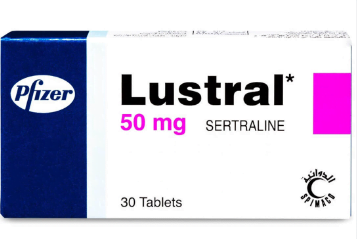
Sertraline is sold under various brand names worldwide. Some of the common brand names for sertraline include:
- Lustral (United Kingdom, Ireland)
- Zoloft (United States, Canada, Australia, New Zealand)
- Eleva (Australia)
- Zosert (India)
- Serlift (India)
- Gladem (Germany)
- Altruline (Mexico)
- Asentra (Poland)
- Tresleen (Spain)
- Aremis (France)
7. Vortioxetine (Brintellix)
The primary use of vortioxetine is for the treatment of depression, which is characterized by persistent feelings of sadness, loss of interest or pleasure in activities, changes in appetite or weight, sleep disturbances, fatigue, feelings of worthlessness or guilt, and difficulty concentrating or making decisions.
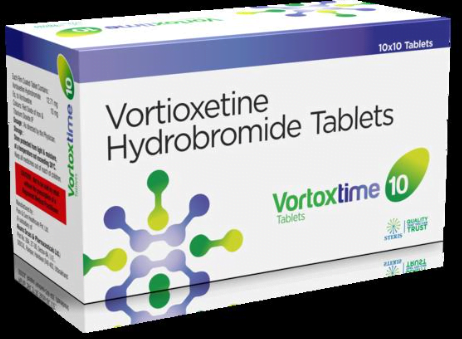
Vortioxetine is marketed under various brand names worldwide. Some of the common brand names for vortioxetine include:
- Brintellix (United States, Canada, Europe)
- Trintellix (United States)
- Stintzing (South Korea)
- Vortiox (India)
- Voryx (Brazil)
- Vorty (Argentina)
- Talvexa (Mexico)
- Vortioxetina (Spain)
- Lu-Vorte (Thailand)
- Vexazin (Indonesia)
Monoamine Oxidase Inhibitors (MAOIs): Interaction with contrave
MAOIs are a class of antidepressant medications that inhibit the enzyme monoamine oxidase, which metabolizes neurotransmitters like serotonin, dopamine, and norepinephrine.
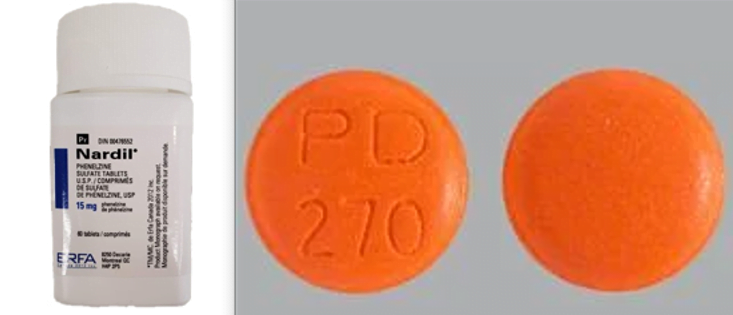
When MAOIs are combined with certain medications or foods that contain tyramine, there is a risk of hypertensive crisis. Tyramine is typically metabolized by monoamine oxidase, and when this enzyme is inhibited by MAOIs, tyramine can accumulate in the body, leading to a sudden and severe increase in blood pressure.
| MAOIs Medication | Interaction with Contrave |
|---|---|
| Phenelzine | Lead to hypertensive crisis, serotonin syndrome, and severe central nervous system toxicity. Avoid concurrent use and allow a washout period of at least 14 days between stopping phenelzine and starting Contrave. |
| Tranylcypromine | Hypertensive crisis, serotonin syndrome, and severe central nervous system toxicity. Allow a washout period of at least 14 days between stopping tranylcypromine and starting Contrave. |
| Isocarboxazid | Hypertensive crisis, serotonin syndrome, and severe central nervous system toxicity. Avoid concurrent use and allow a washout period of at least 14 days between stopping isocarboxazid and starting Contrave. |
| Selegiline | Moderate interaction. Selegiline, when used in low doses for Parkinson’s disease (e.g., selegiline transdermal patch), may have a moderate interaction with Contrave, potentially increasing the risk of hypertensive crisis. However, the risk is lower compared to non-selective irreversible MAOIs. |
| Rasagiline | May have a moderate interaction with Contrave, potentially increasing the risk of hypertensive crisis. However, the risk is lower compared to non-selective irreversible MAOIs. Use caution and monitor blood pressure closely if using both medications concurrently. |
Contrave, particularly because it contains bupropion, can interact with MAOIs in a way that exacerbates this risk. Bupropion can also increase the levels of certain neurotransmitters like norepinephrine, which can further contribute to the hypertensive effect when combined with MAOIs.
Some examples of MAOIs include:
| Drug | Uses |
|---|---|
| Phenelzine(Nardil) | Depression, social anxiety disorder, panic disorder |
| Tranylcypromine(parnate) | Depression |
| Isocarboxazid(Marplan) | Depression |
| Selegiline (Emsam) | Depression, Parkinson’s disease (trans- dermal patch) |
The potential Dangers of taking Contrave with MAOIs include
1. Hypertensive crisis: This is the most significant risk associated with the interaction between Contrave and MAOIs. Hypertensive crisis can lead to symptoms such as severe headache, palpitations, chest pain, nausea, vomiting, sweating, shortness of breath, and even stroke or organ damage in severe cases.
2. Serotonin syndrome: While not as common with MAOIs as with other classes of antidepressants, combining Contrave with MAOIs could potentially increase the risk of serotonin syndrome.
Serotonin syndrome is a serious condition characterized by symptoms such as agitation, confusion, hallucinations, fever, sweating, shivering, rapid heart rate, muscle twitching, and in severe cases, seizures or coma.
3. Other adverse effects: In addition to hypertensive crisis and serotonin syndrome, combining Contrave with MAOIs could increase the risk of other adverse effects associated with both medications, such as seizures, mood changes, or gastrointestinal disturbances.
If a patient is currently taking an MAOI or has recently discontinued one, it’s important to allow an appropriate washout period before starting Contrave to prevent potential adverse effects.
Patients should always consult their healthcare provider before starting or stopping any medication, especially if they are already taking other medications.
Types of Monoamine Oxidase Inhibitors MAOIs
1. Phenelzine (Nardil):
This is one of the earliest developed MAOIs and is used primarily in the treatment of depression.
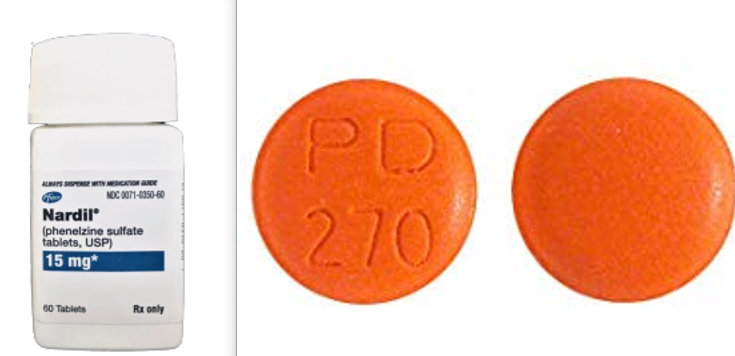
2. Tranylcypromine (Parnate)
Another commonly used MAOI for depression, it works similarly to phenelzine.

3. Isocarboxazid (Marplan): Another MAOI used in the treatment of depression. It’s structurally related to phenelzine and tranylcypromine.
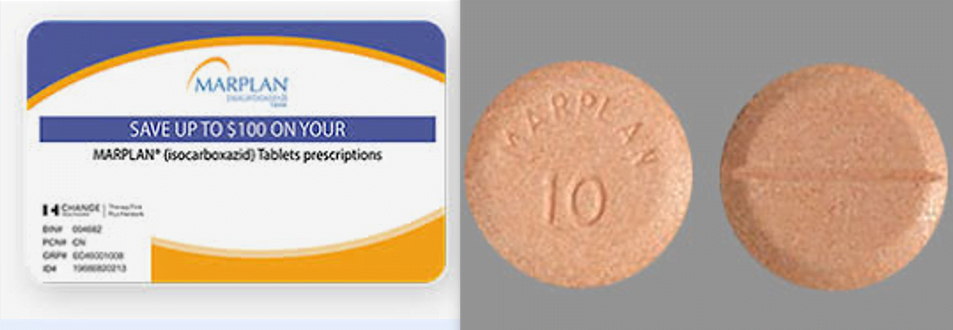
4. Selegiline (Emsam, Eldepryl): Selegiline is used not only for depression but also for the treatment of Parkinson’s disease. It comes in both oral and transdermal patch forms.
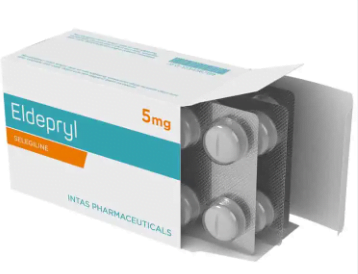
5. Moclobemide: This is a reversible inhibitor of monoamine oxidase A (RIMA), unlike the irreversible inhibitors listed above. It’s used in the treatment of depression and social anxiety disorder.

Tricyclic Antidepressants (TCAs):Interaction with contrave
There are potential interactions between TCAs and Contrave that could lead to increased side effects or adverse reactions.
Both medications can affect heart rate and blood pressure, so combining them could potentially increase the risk of cardiovascular side effects such as tachycardia (rapid heart rate) or hypertension (high blood pressure).
Moreover, combining medications that affect serotonin levels, such as TCAs and bupropion, can increase the risk of serotonin syndrome, a potentially life-threatening condition characterized by symptoms such as agitation, confusion, rapid heart rate, elevated blood pressure, dilated pupils, muscle rigidity, and in severe cases, seizures and coma.
Here are some common brand names of tricyclic antidepressants:
- Amitriptyline (Elavil)
- Clomipramine (Anafranil)
- Doxepin (Sinequan)
- Imipramine (Tofranil)
- Nortriptyline (Pamelor)
- Desipramine (Norpramin)
- Protriptyline (Vivactil)
- Trimipramine (Surmontil)
- Amoxapine (Asendin)
Antipsychotics Interaction with contrave
There aren’t typically known direct interactions between antipsychotics and Contrave. However, there are a few considerations:
- Metabolism: Both antipsychotics and Contrave can affect liver enzyme activity, potentially influencing the metabolism of other medications. This might result in altered blood levels of certain drugs if they are taken together.
- Side Effects: Combining medications can increase the risk of side effects. For example, bupropion, one of the components of Contrave, can lower the seizure threshold, particularly at higher doses. If someone is taking antipsychotics that also lower the seizure threshold, there may be an increased risk of seizures.
- Central Nervous System Depression: Both antipsychotics and Contrave can cause central nervous system (CNS) depression. Combining them might increase the risk of drowsiness, dizziness, and impaired coordination.
It’s essential to discuss any potential interactions or concerns with your healthcare provider before starting or combining medications. They can provide personalized advice based on your medical history and current medications.
Here’s a list of some commonly prescribed antipsychotic medications:
- First Generation (Typical) Antipsychotics:
- Chlorpromazine (Thorazine)
- Haloperidol (Haldol)
- Fluphenazine (Prolixin)
- Perphenazine (Trilafon)
- Thioridazine (Mellaril)

2. Second Generation (Atypical) Antipsychotics:
- Aripiprazole (Abilify)
- Clozapine (Clozaril)
- Olanzapine (Zyprexa)
- Quetiapine (Seroquel)
- Risperidone (Risperdal)
- Paliperidone (Invega)
- Ziprasidone (Geodon)
- Asenapine (Saphris)
- Iloperidone (Fanapt)
- Lurasidone (Latuda)
- Cariprazine (Vraylar)

Opioid Analgesics: Interaction with contrave
Naltrexone, the opioid antagonist component of Contrave, can potentially interact with opioid analgesics in several ways due to its mechanism of action. Here’s an exploration of how this interaction might occur and its potential implications:
1. Reduced Pain Relief: Naltrexone blocks the effects of opioids by binding to opioid receptors in the brain, thereby antagonizing their action.

If a person taking Contrave for weight management or addiction treatment is also prescribed opioid analgesics for pain management, the naltrexone component could interfere with the pain-relieving effects of the opioids. This interaction may result in reduced efficacy of the opioid analgesics, leading to inadequate pain relief.
2. Increased Risk of Opioid Withdrawal: Naltrexone can precipitate opioid withdrawal symptoms in individuals who are physically dependent on opioids.
If a person taking Contrave inadvertently consumes opioid analgesics while on naltrexone therapy, they may experience sudden and severe withdrawal symptoms due to the blockade of opioid receptors.
These symptoms can include nausea, vomiting, diarrhea, sweating, anxiety, agitation, and cravings for opioids. The severity of withdrawal symptoms may depend on the dose and duration of opioid use prior to naltrexone administration.
3. Potential for Abuse Deterrence: On the flip side, the presence of naltrexone in Contrave may act as a deterrent against opioid abuse.
Since naltrexone blocks the euphoric effects of opioids, individuals who attempt to misuse opioid analgesics while on Contrave therapy may experience diminished rewarding effects, making it less likely for them to seek opioids for recreational purposes
4. Individual Variation: It’s important to note that the extent of interaction between Contrave and opioid analgesics can vary among individuals based on factors such as genetic predisposition, dosage, duration of therapy, and underlying medical conditions.
Some individuals may experience significant interactions and adverse effects, while others may not experience any noticeable effects.
5. Clinical Monitoring and Management: Healthcare providers should be aware of the potential interaction between Contrave and opioid analgesics and carefully monitor patients who are co-administered these medications.
Close monitoring can help identify any signs of reduced pain relief, opioid withdrawal symptoms, or other adverse effects, allowing for timely intervention and adjustment of treatment strategies if necessary.
Anti-seizure Medications interaction with contrave
Contrave is a combination medication consisting of two active ingredients: bupropion and naltrexone. Both of these components have the potential to affect seizure thresholds, albeit in different ways.
1. Bupropion: Bupropion is an antidepressant that is also used as a smoking cessation aid. It has been associated with an increased risk of seizures, particularly at higher doses. When combined with anti-seizure medications, there is a potential for additive effects on lowering the seizure threshold.
Therefore, caution is warranted when using bupropion alongside anti-seizure medications. Dosage adjustments may be necessary to minimize this risk, especially if the patient is already predisposed to seizures or is taking medications that lower seizure threshold.
2. Naltrexone: Naltrexone is primarily used in the treatment of alcohol and opioid dependence. While it is not typically associated with an increased risk of seizures, its interaction with anti-seizure medications may still need to be considered.
This is because any medication that affects the central nervous system, including naltrexone, could potentially interact with anti-seizure medications and influence their effectiveness or side effects.

Given the potential interactions between Contrave (bupropion and naltrexone) and anti-seizure medications, healthcare providers should carefully assess the risks and benefits of co-administration.
In some cases, dosage adjustments or close monitoring may be necessary to ensure the safety and efficacy of both medication regimens. Patients should be advised to report any changes in seizure frequency or severity promptly so that appropriate adjustments can be made.
Blood Pressure Medications Interaction with Contrave
Interactions with blood pressure medications, it’s essential to be cautious, especially if you’re taking medications for high blood pressure or other cardiovascular conditions.
Bupropion, one of the components of Contrave, can increase blood pressure in some individuals. Therefore, if you’re already taking medications to manage hypertension, combining them with Contrave may potentially exacerbate this effect, leading to elevated blood pressure.
Some common classes of blood pressure medications include:
1. ACE inhibitors: Examples include lisinopril, enalapril.

2. ARBs (Angiotensin II Receptor Blockers): Examples include losartan, valsartan, Telmisartan
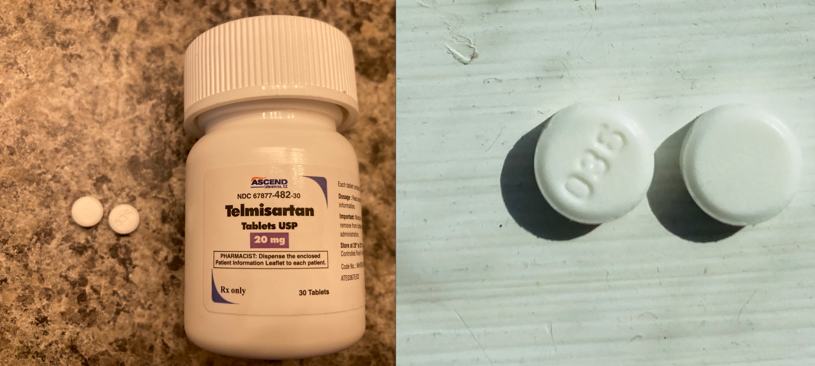
3. Beta-blockers: Examples include metoprolol, atenolol, Labetalol.
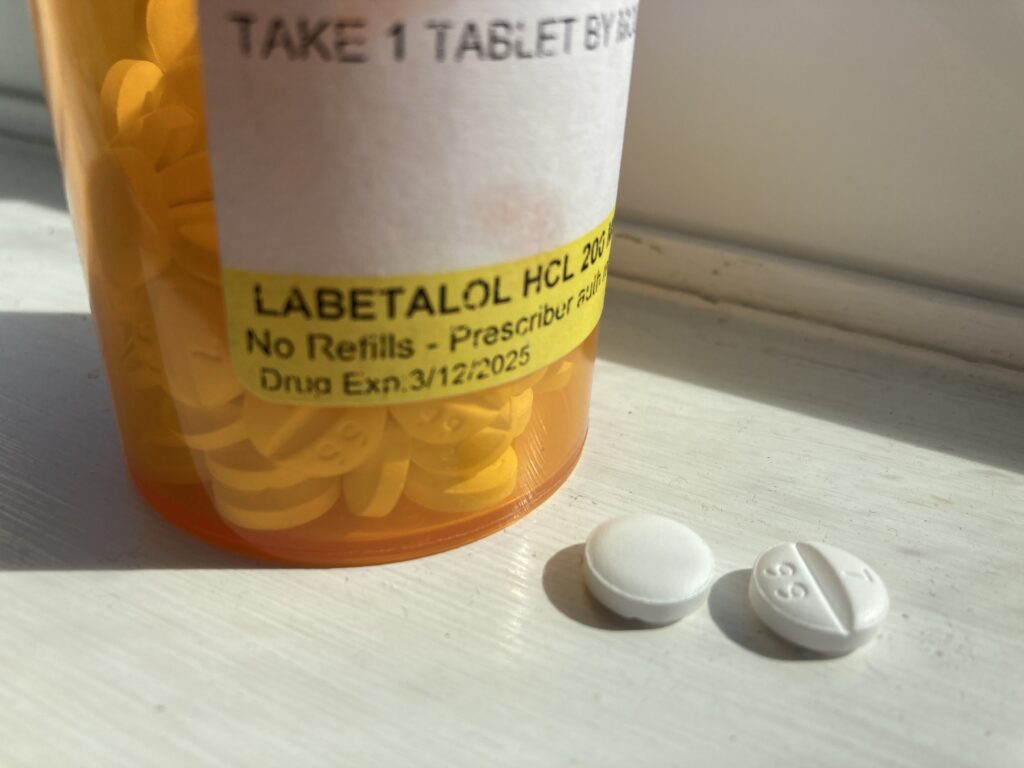
4. Calcium channel blockers: Examples include amlodipine, diltiazem.
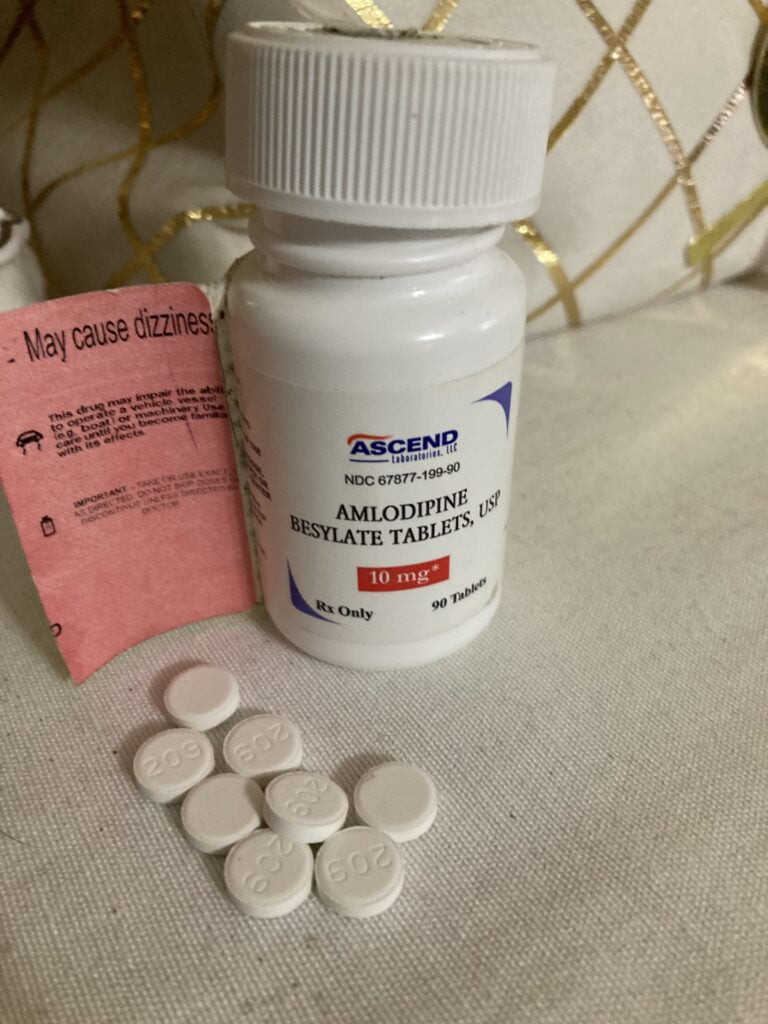
5. Diuretics: Examples include hydrochlorothiazide, furosemide.
Diabetes Medications Interaction with Contrave
Several factors that can influence the interactions, between diabetic medication and Contrave.
1. Blood Sugar Levels: Bupropion, one of the components of Contrave, can sometimes affect blood sugar levels. It may lead to changes in insulin sensitivity or glucose metabolism. For individuals with diabetes, this could potentially affect their blood sugar control.
2. Medication Absorption: Bupropion, in particular, may affect the absorption of certain diabetes medications. It’s important to monitor blood sugar levels closely when starting Contrave, especially if the individual is taking medications like insulin or oral hypoglycemic agents.
3. Liver Function: Both naltrexone and bupropion are metabolized in the liver. Some diabetes medications may also affect liver function or be metabolized by the liver. Using Contrave with certain diabetes medications might lead to increased liver enzyme levels or altered metabolism of either medication.
4. Side Effects: Both Contrave and diabetes medications can have side effects. Combining them may increase the risk or severity of certain side effects, such as nausea, dizziness, or gastrointestinal disturbances.

5. Weight Loss Effects: Contrave is often prescribed for weight management, and weight loss can sometimes affect diabetes management. Changes in weight may require adjustments to diabetes medications, insulin dosages, or meal plans.
Medications you should never Take with Contrave
| Drug | Reason |
|---|---|
| Nardil (phenelzine) | Risk of serotonin syndrome and hypertensive crisis |
| Selegiline (Emsam) | Hypertensive crisis |
| Linezolid (Zyvox) | Potential for serotonin syndrome and hypertensive crisis |
| Tramadol (Ultram) | Increased risk of opioid overdose and respiratory depression |
| Meperidine (Demerol) | Serotonin syndrome |
| Buprenorphine (Subutex) | Potential for opioid overdose and respiratory depression |
Common over the counter drugs that intheracts with contrave
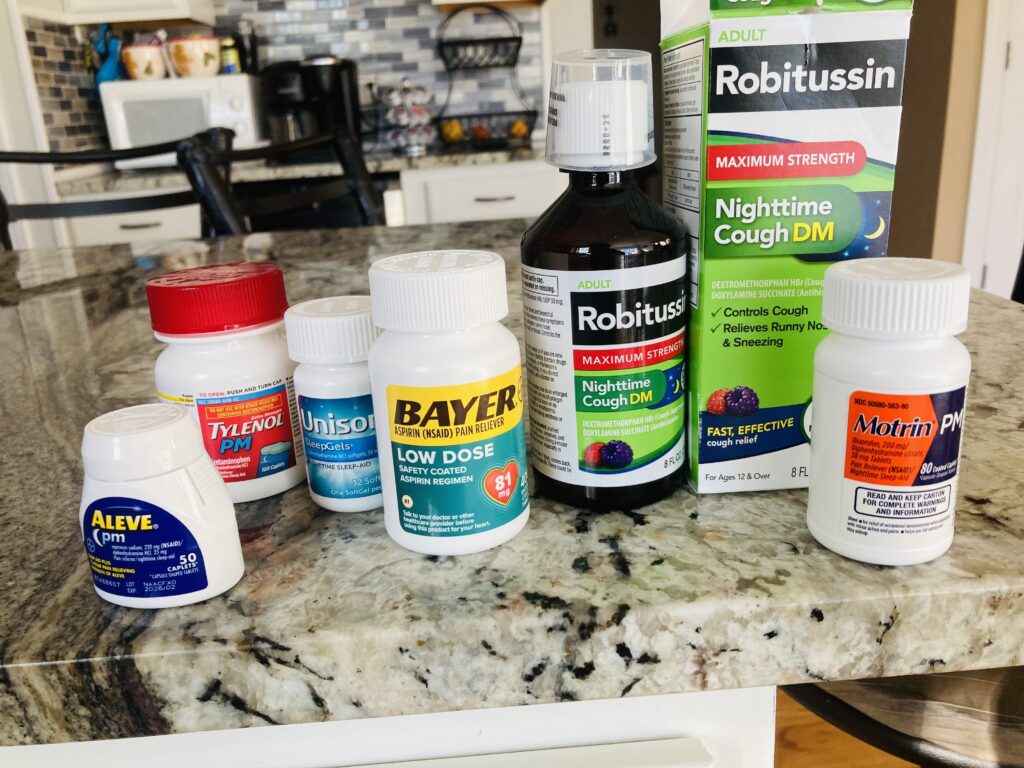
1. Nonsteroidal Anti-Inflammatory Drugs (NSAIDs): Interaction with contrave
Over-the-counter pain relievers like ibuprofen (Advil, Motrin) and naproxen (Aleve) may interact with Contrave, potentially increasing the risk of bleeding or gastrointestinal irritation.

When taken together, NSAIDs and Contrave can interact in several ways, potentially increasing the risk of adverse effects, especially in individuals with a history of bleeding disorders:
Increased risk of bleeding: Both NSAIDs and Contrave can independently increase the risk of bleeding. NSAIDs can interfere with platelet function, which is essential for blood clotting, while Contrave may have effects on blood clotting factors.
When taken together, these effects can be additive, increasing the risk of bleeding events, especially in individuals with a history of bleeding disorders or those taking other medications that affect blood clotting.
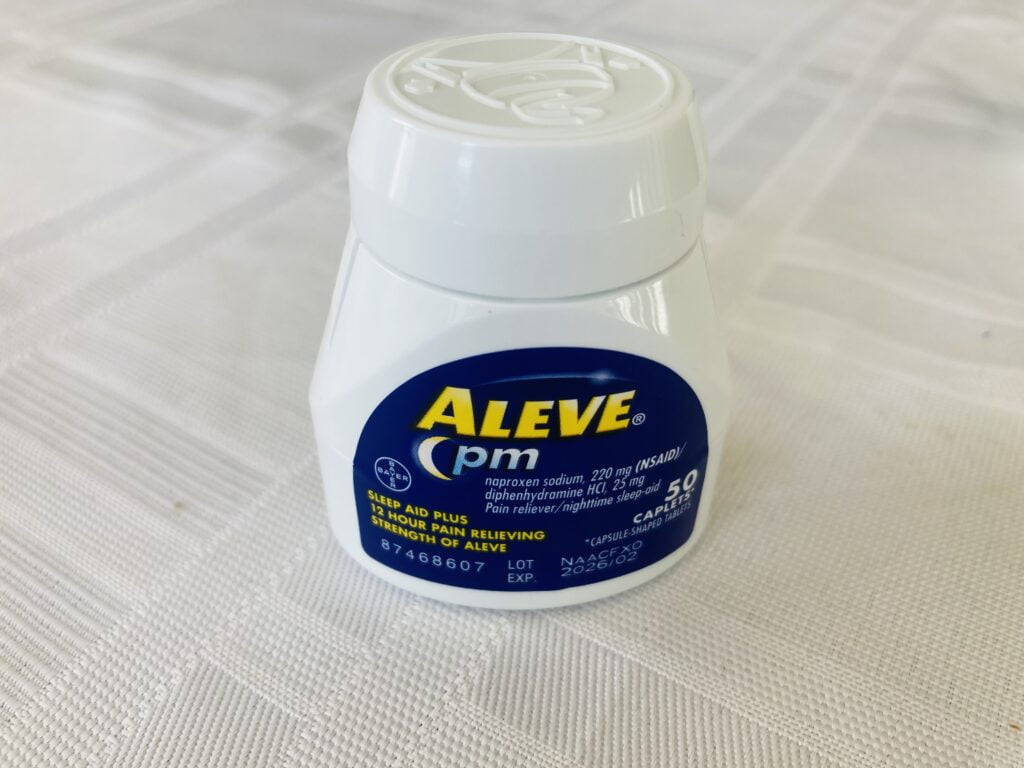
Gastrointestinal irritation: NSAIDs are known to irritate the lining of the stomach and intestines, potentially leading to ulcers or gastrointestinal bleeding.
The risk of gastrointestinal side effects may be increased when NSAIDs are taken with Contrave, which could further exacerbate stomach or intestinal issues.
Kidney function: Both NSAIDs and Contrave can affect kidney function. NSAIDs may reduce blood flow to the kidneys and impair their ability to filter waste products from the blood.
In some cases, this can lead to kidney damage or worsening of pre-existing kidney conditions. Combining NSAIDs with Contrave may increase the risk of kidney-related side effects.
High blood pressure: NSAIDs can cause fluid retention and increase blood pressure in some individuals.
While Contrave itself may not directly affect blood pressure, the combination with NSAIDs could potentially exacerbate any blood pressure-raising effects, especially in individuals with hypertension or heart disease.
2. Acetaminophen (Tylenol) interaction with Contrave
While acetaminophen is generally considered safe, it’s always advisable to use caution when combining it with other medications, including Contrave, to avoid potential liver toxicity.
There are no significant interactions reported between acetaminophen and the active ingredients in Contrave (bupropion and naltrexone).

3. Cough and Cold Medications: Interaction with contrave
Some cough and cold medications contain ingredients that may interact with Contrave, such as dextromethorphan or pseudoephedrine. These interactions can lead to increased side effects like elevated blood pressure or heart rate

When taken together, Contrave and medications containing dextromethorphan or pseudoephedrine can interact in several ways:
1. Increased blood pressure: Both Contrave and pseudoephedrine can increase blood pressure. When taken together, their effects may be additive, potentially leading to dangerously high blood pressure levels.
2. Increased heart rate: Similarly, both Contrave and pseudoephedrine can increase heart rate. Combining them can exacerbate this effect, potentially leading to palpitations or other heart-related issues.
3. Central nervous system effects: Dextromethorphan and bupropion both affect the central nervous system, although in different ways. Combining them may increase the risk of side effects such as confusion, dizziness, or drowsiness.
4. Serotonin syndrome: While less common, there’s a potential risk of serotonin syndrome when combining Contrave with medications containing dextromethorphan.
Serotonin syndrome is a serious condition characterized by dangerously high levels of serotonin in the brain, which can cause symptoms ranging from mild (e.g., shivering, diarrhea) to severe (e.g., seizures, coma).
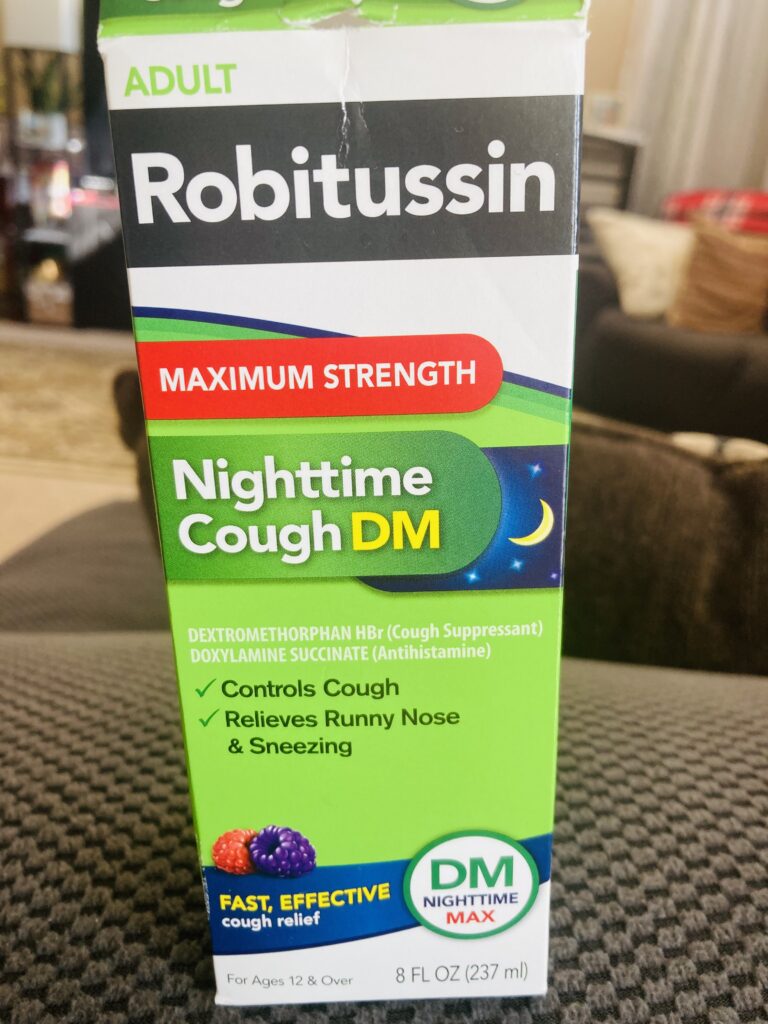
Contrave with medications containing dextromethorphan or pseudoephedrine should be avoided unless specifically directed by a healthcare provider.
If someone is taking Contrave and needs relief from cough or cold symptoms, it’s essential for them to consult their healthcare provider or pharmacist for guidance on safe alternatives that won’t interact with Contrave or exacerbate its side effects.
4. Antacids: Interaction with Contrave
When it comes to interactions with antacids, there’s generally no significant interaction between antacids and Contrave. Antacids are commonly used to relieve symptoms of heartburn, indigestion, and acid reflux by neutralizing stomach acid. They typically contain compounds like calcium carbonate, magnesium hydroxide, or aluminum hydroxide.
Since antacids primarily work in the stomach to neutralize acid and Contrave primarily works in the brain to regulate appetite and cravings, there’s no direct interaction between the two.
5. Sleep Aids: Interaction with contrave
There isn’t a well-documented interaction between Contrave and sleep aids like benzodiazepines or non-benzodiazepine sedative-hypnotics.
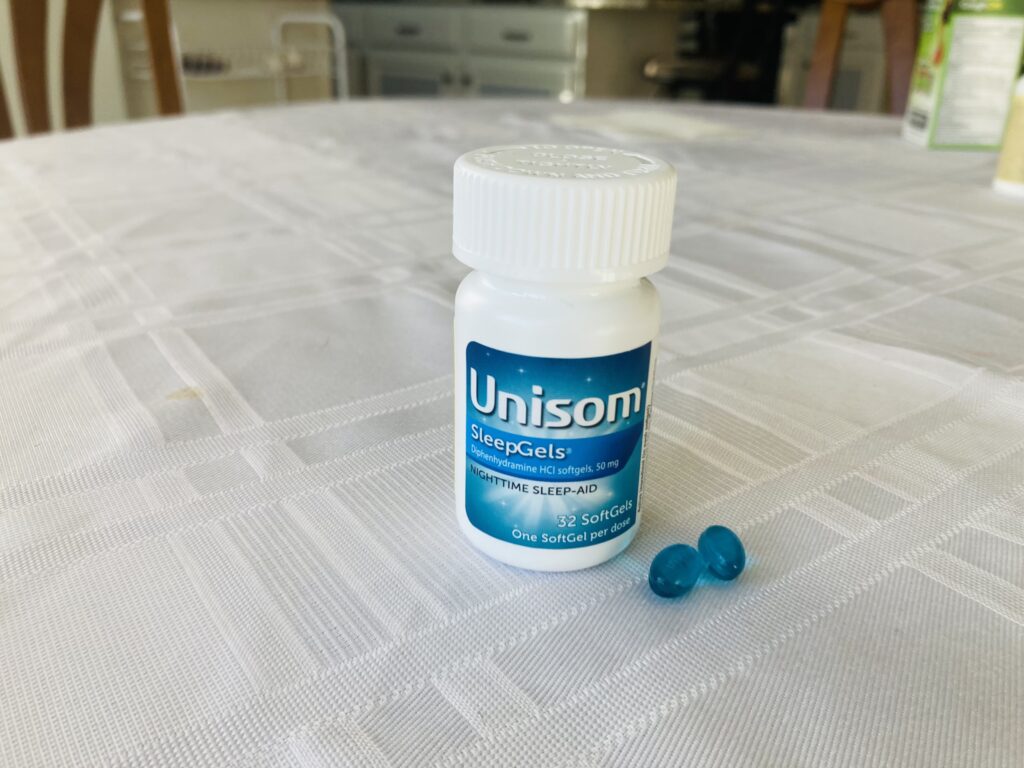
However, both Contrave and some sleep aids can cause drowsiness and central nervous system depression, so there may be an additive effect on sedation.
| Prescription Sleep Aids | Over-the-Counter Sleep Aids |
|---|---|
| Benzodiazepines (e.g., diazepam, alprazolam) | Diphenhydramine (e.g., Benadryl) |
| Non-benzodiazepine sedative-hypnotics (e.g., zolpidem, eszopiclone) | Doxylamine (e.g., Unisom) |
This means that taking them together could potentially increase the risk of drowsiness, dizziness, difficulty concentrating, and impaired judgment.
6. Weight Loss Supplements: Interaction with Contrave
Some weight loss supplements may contain ingredients that affect serotonin levels or interact with other neurotransmitter systems, which could theoretically interact with bupropion in Contrave and increase the risk of serotonin syndrome or other adverse effects.

Due to the complexity of interactions between Contrave and various weight loss supplements, it’s essential to consult with a healthcare professional before combining them. They can provide personalized advice based on your medical history, current medications, and the specific ingredients in the weight loss supplement.
In some cases, they may recommend avoiding certain supplements altogether or adjusting the timing or dosage of Contrave to minimize potential interactions and maximize safety and efficacy.
Herbs that may potentially interact with Contrave:
| Herb | Potential Interaction with Contrave |
|---|---|
| St. John’s Wort | Increased risk of serotonin syndrome or other adverse effects due to serotonin modulation. |
| Ginseng | Potential for increased side effects such as jitteriness or elevated blood pressure due to stimulant properties. |
| Ephedra | Potential exacerbation of cardiovascular risks due to stimulant effects. Ephedra is banned in many countries. |
| Yohimbe | Potential increase in heart rate and blood pressure due to stimulant properties. |
| Kava | Increased risk of drowsiness or impaired coordination due to effects on neurotransmitter levels. |






